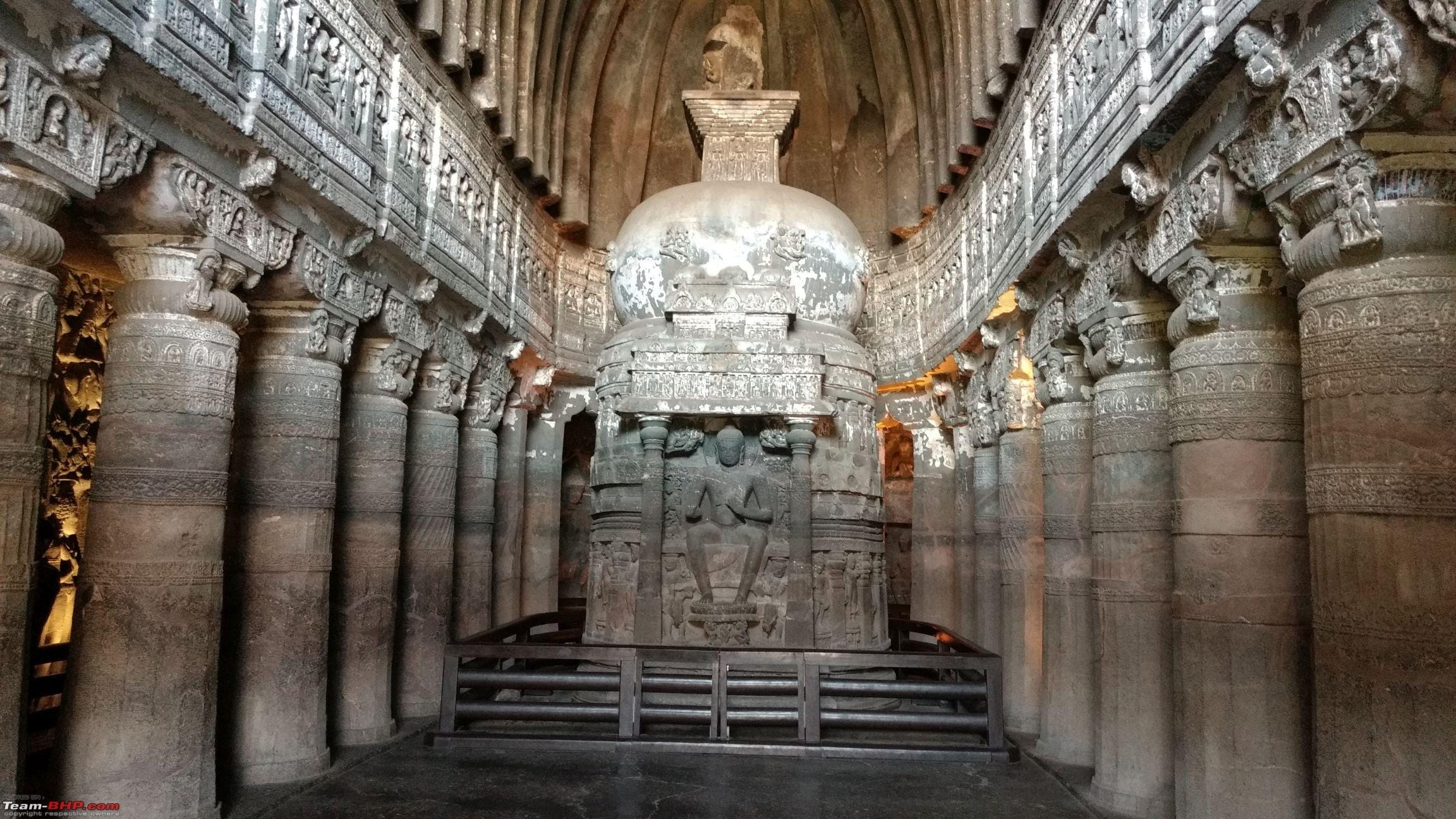Ajanta caves history
Ajanta caves – History- How to reach
The Ajanta Caves are a series of 29 Buddhist rock-cut cave monuments located in the Aurangabad district of Maharashtra, India. They were created between the 2nd century BCE and the 6th century CE and are considered to be one of the greatest surviving examples of ancient Indian rock-cut architecture. The Ajanta Caves contain paintings and sculptures that depict scenes from the life of the Buddha, as well as myths and legends from Buddhist literature. They were declared a UNESCO World Heritage Site in 1983.
History
The Ajanta Caves were created between the 2nd century BCE and the 6th century CE. It is believed that they were initially used as Buddhist monasteries and later converted into temples. The caves remained unknown to the outside world until they were rediscovered by British army officer John Smith in 1819. Over the centuries, the caves had been covered by jungle growth and were in a state of disrepair. The caves were restored and preserved by the Archaeological Survey of India in the early 20th century.
Despite their isolation and long period of neglect, the Ajanta Caves remain an important example of ancient Indian rock-cut architecture and Buddhist art. The paintings and sculptures inside the caves provide a glimpse into the religious and cultural life of ancient India. The caves are now a popular tourist destination and are considered one of India’s greatest cultural treasures.
Facts
Here are some facts about the Caves:
- The Ajanta Caves are located in the Aurangabad district of Maharashtra, India.
- There are 29 caves in total, which were created between the 2nd century BCE and the 6th century CE.
- The caves were originally used as Buddhist monasteries and later converted into temples.
- The Ajanta Caves are considered to be one of the greatest surviving examples of ancient Indian rock-cut architecture.
- The caves contain paintings and sculptures that depict scenes from the life of the Buddha, as well as myths and legends from Buddhist literature.
- The Ajanta Caves were rediscovered by British army officer John Smith in 1819.
- The caves were declared a UNESCO World Heritage Site in 1983.
- The Ajanta Caves have been the subject of extensive restoration and preservation efforts by the Archaeological Survey of India.
- The caves are now a popular tourist destination, attracting visitors from all over the world.
- The Ajanta Caves are considered one of India’s greatest cultural treasures and are an important source of information about ancient Indian religion and culture.
How to reach
The Ajanta Caves are located in the Aurangabad district of Maharashtra, India, and there are several ways to reach them:
- By Air: The nearest airport is Aurangabad Airport, which is approximately 106 km from the Ajanta Caves. From the airport, you can take a taxi or hire a car to reach the caves.
- By Train: The nearest railway station is Aurangabad Railway Station, which is well-connected to major cities in India. From the railway station, you can take a taxi or hire a car to reach the caves.
- By Bus: There are regular bus services from Aurangabad to the Ajanta Caves. You can also hire a taxi or rent a car for the journey.
- By Road: If you are driving from Aurangabad, it takes about 2 hours to reach the Ajanta Caves. The road is well-maintained and signposted.
It’s important to note that the Ajanta Caves are located in a remote area, so it’s recommended to plan your visit in advance and arrange for transportation.
Best time to visit
The best time to visit the Ajanta Caves is from October to March, during the winter months. During this time, the weather is pleasant and suitable for outdoor activities. Additionally, the caves are less crowded, making it easier to enjoy your visit.
Summer months from April to June can be very hot, with temperatures reaching up to 40°C, making it difficult to explore the caves. The monsoon season from July to September can also make the roads to the caves difficult to traverse, as well as causing damage to the caves themselves.
In conclusion, the winter months of October to March are the ideal time to visit the Ajanta Caves, when the weather is pleasant, and the crowds are minimal.
Nearby Attractions
The Caves are located in the Aurangabad district of Maharashtra, India, and there are several nearby attractions that are worth visiting:
- Aurangabad City: Aurangabad is a historic city that is known for its rich cultural heritage and is located approximately 106 km from the Ajanta Caves. It is home to several famous monuments, including the Bibi Ka Maqbara, a mausoleum that resembles the Taj Mahal.
- Ellora Caves: The Ellora Caves are a series of 34 rock-cut Buddhist, Hindu and Jain temples located approximately 30 km from the Ajanta Caves. The caves were created between the 6th and 10th centuries CE and are considered to be one of the greatest examples of rock-cut architecture in India.
- Daulatabad Fort: Daulatabad Fort is a medieval fort located approximately 13 km from Aurangabad. The fort was originally built in the 12th century and is known for its impressive architecture and rich history.
- Grishneshwar Temple: Grishneshwar Temple is a Hindu temple located approximately 30 km from Aurangabad. The temple is dedicated to Lord Shiva and is one of the 12 Jyotirlinga shrines in India.
- Pithalkora Cave: Pithalkora Cave is a rock-cut Buddhist monastery located approximately 35 km from the Ajanta Caves. The cave dates back to the 2nd century BCE and is considered to be one of the earliest examples of rock-cut architecture in India.
These nearby attractions offer a glimpse into the rich cultural heritage of the region and provide a perfect complement to a visit to the Caves.



